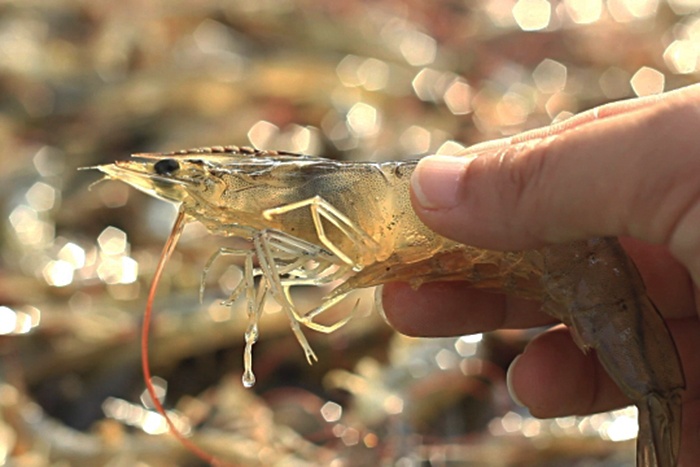Prevention and Treatment of Filamentous Bacteria in Shrimp
When shrimp are infected with filamentous bacteria, there may not be any obvious signs at first, but as the condition worsens, shrimp may start to die sporadically.
What are Filamentous Bacteria?
Filamentous bacteria, scientifically known as Leucothrix mucor, are saprophytic bacteria that live in rivers and oceans. They have the ability to attach to the outer surface of shrimp and break down various types of organic compounds.

Symptoms of Filamentous Bacterial Infection
The shrimp's gills may turn black or brown, and the pleopods (swimming legs) and pereiopods (walking legs) become gray and covered with fuzz. In severe cases, the gills turn yellow, gray, or green and become covered with fuzz, which affects respiration. Infected shrimp often rise to the surface, drift towards the shore, and die sporadically. In more serious cases, shrimp may fail to molt.This disease commonly occurs in ponds with high levels of organic matter and dense stocking densities.
Causes of Filamentous Bacterial Infection
The primary cause of the disease is the presence of certain species of filamentous bacteria from the family Cytophagaceae, including Leucothrix mucor, Cytophaga sp., and Flexibacter sp. These bacteria may act independently or in combination to infect the gills, body, and appendages of shrimp. They exist only in vegetative form and do not produce spores. These bacteria are part of the saprophytic microbial community found in seas and estuaries.
They can adhere to the outer surface of many aquatic animals and are capable of breaking down cellulose, chitin, and other organic compounds.
Prevention and Treatment of Filamentous Bacterial Infection in Shrimp
To prevent the disease, it is crucial to maintain a healthy environment and manage organic waste.
If filamentous bacteria are detected but there are no symptoms of the disease yet, you can use BKC 80% to eliminate algae and Probio Yucca to clean the water
Ngày đăng : 17/10/2024
1930 View
Other Articles
CTU-RAS: Recirculating Shrimp Farming for Sustainable Development
Vietnamese aquatic products reach new markets
Global Shrimp Forum: Global shrimp trade is reshaping
China’s Import Value Up 10%, Vietnamese Shrimp Remains Among Leading Suppliers
After the 7.5-magnitude offshore earthquake in Aomori that injured 34 people, Japan has issued a warning about a potential mega-earthquake
India’s shrimp exports accelerate despite the trade war with the United States
Portuguese food group acquires 18% stake in cod farming company Norcod
Indonesia implements radioactive-free shrimp certification for exports to the United States
India is world’s second-largest shrimp producer. That is now under threat
Ca Mau’s shrimp industry moves towards “green” growth
Floods devastate aquaculture, processing operations in Vietnam
Ecuador Leads Global Shrimp Exports, Surpassing USD 7 Billion in 2025



















.jpg)